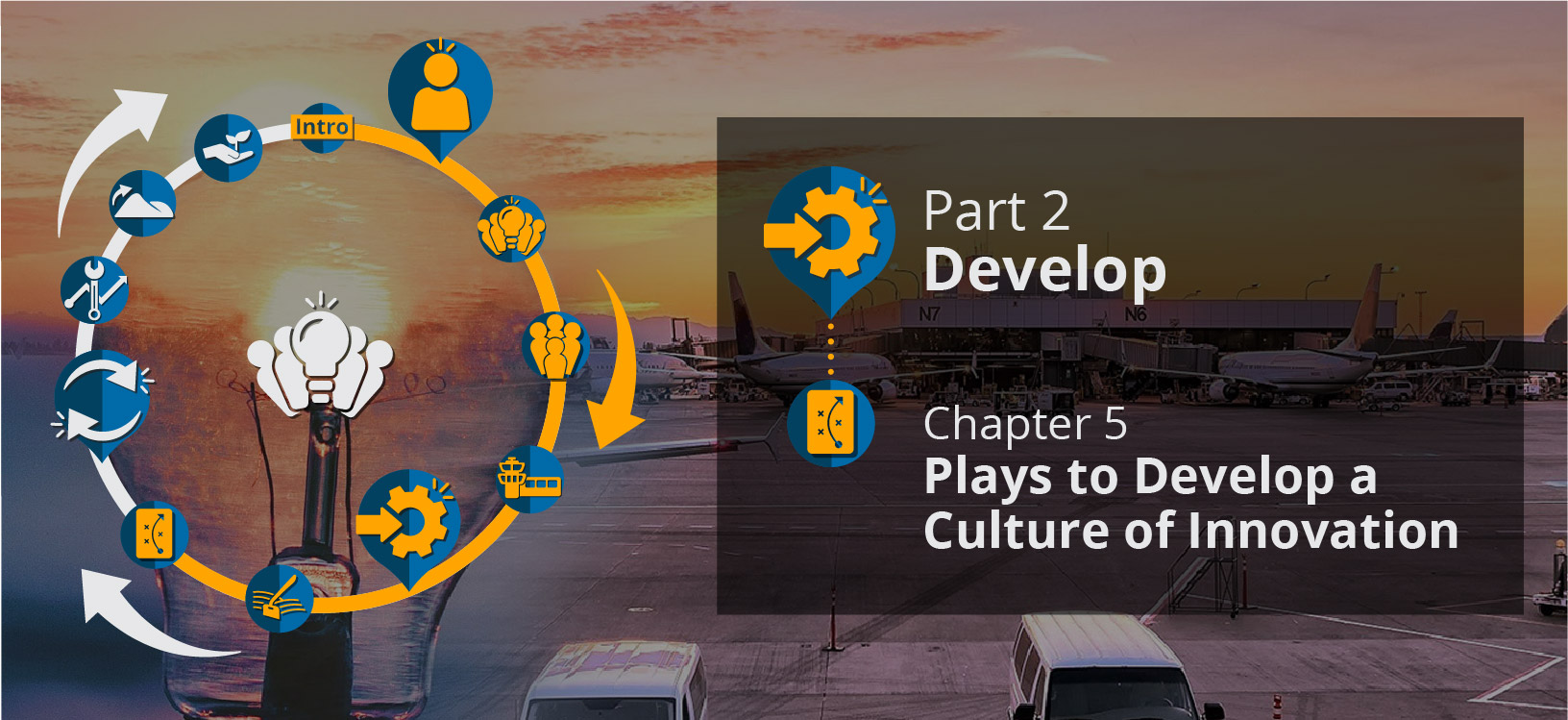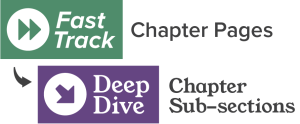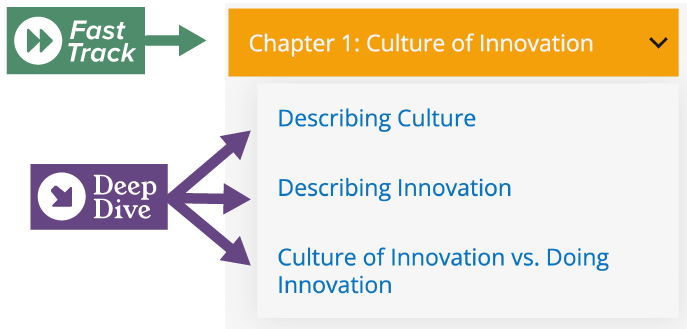

This is a Deep Dive page. Select the chapter for the Fast Track
Play 5: Put the Customer First (Leadership)
Innovative leaders understand that when people become myopically focused on their own career paths and promotions, the customer is no longer the priority. However, when the correct priority is given to the customer, the employee wins in the end, too. This play prepares leaders to unify their organizations by focusing on a collective goal of putting others first so that the rest will follow naturally.
Everyone Has a Role
Innovative leaders
- Remember that everyone is in this together. Convey to staff how the airport ecosystem does not operate in a vacuum; they are representatives of their communities and of the aviation industry as a whole. Keep in perspective the airport's collective reputation with the entire industry. Any progress made, or any missteps taken by any key stakeholders in the airport environment, will ultimately be attributed to everyone.
- Include the “supporting cast.” Speak to the collective reputation of the staff and the many airport partner cast members that provide services to customers each day. Motivate staff to see beyond their own individual role, team, department, or organization; inspire the collective cast to generate new ideas that will benefit its customers. Focusing on the customer can take the focus off the employee, break down a silo mentality, reduce unhealthy competition among staff and airport partners, and give everyone a bigger perspective on how their contributions can impact the entire industry. This helps each cast member see how their work matters.
Click this link to view a pop-up with a great example of an airport director engaging stakeholders to identify solutions.
Develop a System to Collect Customer Feedback
Innovative airport leaders consider all customers in their planning efforts. They think beyond the passenger as their sole customer and include organizations like airport tenants, airlines, government agencies, and local partners in their definition of “customer.”
Innovative leaders
- Collect information. Understand each customer's needs, insights, and issues. Customer feedback is powerful information that can help improve the customer experience and positively change the direction of goals and priorities at an airport. Determine what types of customer input are collected and what the desired outcomes are. Think about what part of the customer experience you would like to improve (e.g., efficiency, notification) and work to capture the intel that will shine a light on progress.
- Capture illusive data. Collect customer feedback in varying ways, from very simple to complex. Develop quick and easy online surveys through any number of fee-based platforms, but be sure to stay focused on an area of interest and be clear and consistent with the rating scales to make the feedback easy to decipher. Email customers to collect data, but make it personal by setting up a system that collects and organizes the feedback, as well as sends a response message to let them know their feedback was acknowledged. Conduct pilot programs or usability tests in certain circumstances to see if new ideas or approaches will work before they are considered for full implementation. Conduct customer interviews, focus groups, or even hackathons (collaborative ideation workshops) to think through issues collaboratively. Also use social media, as it offers an endless set of opportunities to “hear” the customer and respond in near real-time.
Allocate Time to Evaluate Customer Feedback
Innovative leaders
- Evaluate and decipher data. It is not enough to just collect feedback; focus on what to do with the collected data. Spend time evaluating and analyzing findings so the data does not get lost. Data should be organized, accessible, and understandable so that the information can be transformed into actionable outcomes. Regularly interact with key team members from the airport environment to assist with deciphering feedback.
- Turn customer feedback into action. Do something visible with the results; people will be less likely to give feedback in the future if they do not see tangible actions taken based on what they have already provided. Integrate feedback into a decision-making process. Discuss findings with relevant staff in meetings or whiteboard sessions to make action plans, work on them, and turn them into results.
- Prioritize and cut. When analyzing results, modify existing goals or set new directions to explore. Set some ideas aside for now, or take some off the list for good. When negative feedback is collected, use it to fix those issues as soon as possible, and then try to understand the reasons for those issues so they will not happen again.
More information on seeking feedback and developing metrics to prioritize plans or change plan direction can be found in Ways to Maintain Your Plays in Chapter 6.


